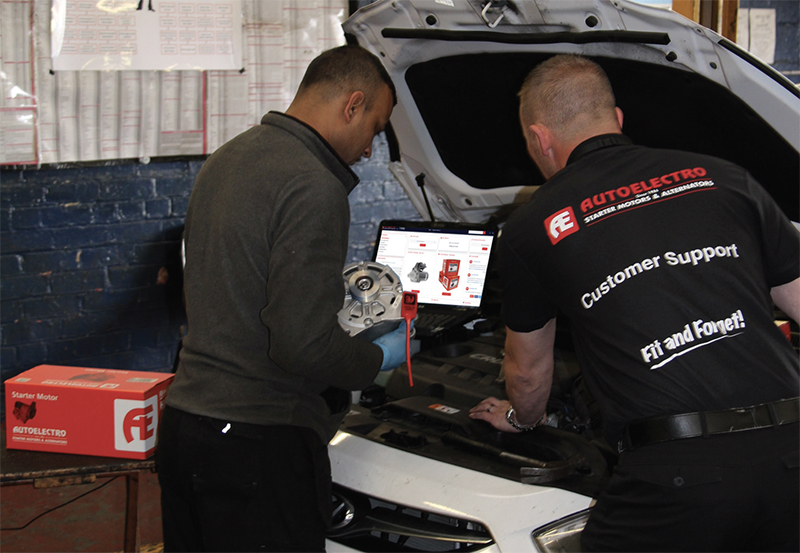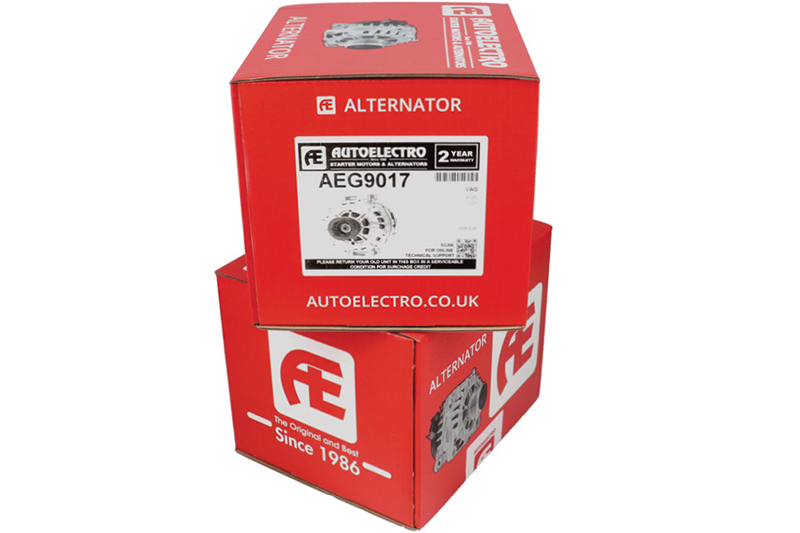
Rotating electrics is a competitive industry and as a new ‘season’ emerges, Autoelectro is eager to reiterate its credentials to workshops.
The remanufacturer, with more than 35 years of dedicated service to the automotive aftermarket, is keen to remind technicians that misdiagnosis of a starter motor or alternator is a common hazard.
With a strong season predicted, which, in part, could be due to the unprecedented summer temperatures, the remanufacturer has some useful advice so technicians can stay on top this winter. With an ever-increasing amount of electronics on a modern vehicle and vehicle manufacturers developing alternators that are smaller in size but emit greater output, the result is an alternator that generally gives off more heat.
In recent times, cooling ducts and even water cooling have been used to combat increased operating temperatures; however, this, combined with the record-breaking warm summer, could cause an unusual spike in alternator issues, with excessive under bonnet temperatures stressing electronic components that could result in a greater number of replacements.
If the alternator managed to escape problems throughout the summer, it’s plausible that issues could be just around the corner, with already strained components subject to seasonably low temperatures that result in greater performance requirements. Consequently, technicians could be in for a busy period.

Avoiding misdiagnosis
That said, technicians shouldn’t automatically assume that a failed alternator or a starter motor is what they’re dealing with. Misdiagnosis is one of the most common misconceptions in the workshop.
Autoelectro UK Sales Manager, Nick Hood, said: “It’s important to understand why the starter motor or alternator has failed – there are external factors, of course, but there are internal causes too; for example, on a Renault Clio 2.0 petrol (2000-2013), there is a known issue with the vehicle’s drive belt system, which causes the belt to slip, most often resulting in the failure of the power steering pump bearings.
“At the same time, a slipping belt can have serious consequences for the alternator, resulting in premature failure. We recommend replacing the drive belt, tensioner, power steering pump and refill power steering pump with automatic transmission fluid. Failure to observe this will result in the early demise of the replacement alternator.
“The Fiat Punto/Panda 1.2 (2003-2015) suffers with an issue that causes the starter motor to burn out. The problem is due to an insufficient operating voltage at the ECU following a ‘cold start’. We advise that the ECU be reprogrammed and updated with modified software. The situation will avoid premature failure of the replacement starter motor in the future.”
Investing in workshops
This type of advice can be found within an Autoelectro box if the starter motor or alternator has a recognised, consequential mode of failure, achieved thanks to the extensive analysis and diagnosis the company carries out in product development or when testing failed parts. The remanufacturer’s modern test benches enable its experts to increase the company’s range, introduce new products quickly, but, vitally, strengthen technical learning and understanding.
Over the last decade, starter motors and alternators have gone through a significant period of design and performance changes, with the introduction of start/stop technology, combined starter motors and alternators, and 48 V units to cater for the increase of electrical comforts, so having the latest test bench equipment is critical in staying ahead of the curve.









